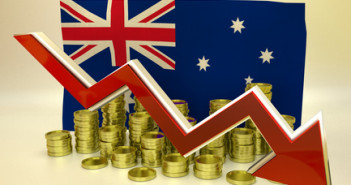The Australian dollar came under pressure from many sides last week, especially after a unexpected  move by the Bank of Canada to cut interest rates and the size of the ECB stimulus plan that was much larger than most analysts expected.
The Bank of Canada last week, in a surprise move to the market slashed its benchmark rate to 0.75%, from 1.00% in an attempt to revive the economy after poor inflation data, and to help offset falling oil prices, which have slumped more than 50% this year,
Canada is one of the world’s biggest exporters of oil and the sudden drop in price of one of the world’s most useable commodities is having a profound effect on the Canadian economy.
Guest Post by Andrew Masters from FiboGroup
Worried that the fall in oil prices will reduce Inflation while causing a slowdown in the economy BoC Governor Stephen Poloz said the bank “has room to manouver should its forecast prove to be either too pessimistic or too optimisticâ€.
Most Analysts took the statement that the bank will cut interest rates further if the situation doesn’t improve.
Australia’s biggest export, iron ore has also fallen by more than 50% in the last 12 months which may be a sign that the RBA may have to follow in the footsteps of the Canadian government and cut rates.
Westpac senior currency strategist Sean Callow noted that the Australian dollar didn’t take the news well dropping sharply after the announcement,
“The Australian dollar and the New Zealand dollar tumbled in sympathy with the Canadian dollar as the Bank of Canada delivered a shock rate cut,†he said.
“It is very rare for the Australian dollar to respond to Canadian news but markets are obviously edgy about the Reserve Bank of Australia interest rate outlook.â€
Sounding more bearish was Market Economics managing director Stephen Koukoulas who said that the RBA can’t stand on the sidelines waiting for something to happen and should make a move at the next board meeting on February 3rd,
“I wouldn’t say it’s urgent but if they don’t cut in February I don’t know what’s going on with them,†he said.
“It’s just absurd and the RBA can’t let it stand.â€
The Australian dollar also came under further pressure last week on news that the European central bank will spend more during their stimulus program to kick-start the Eurozone economy.
The ECB plans to spend  about $1.57 trillion or €50 billion a month until December 2016 to help revive economic growth.
Some economists believe that this may give a short term boost to the Australian dollar as Investors chase returns in higher yielding currencies like the Aussie.
Interest rates in Australia currently sit at 2.5% which is one of the highest rates amongst developed countries.
Some worrying signs emerged out of China last week as the country’s 7.4 % economic growth for 2014 was its worst performance since 1990 although it was in line with most analysts forecasts.
China recorded 1.5% growth for the fourth quarter taking it to 7.4% over 2014 according to the National Bureau of Statistics of China.
The biggest slowdown in 24 years doesn’t sit well with the Australian economy as China is Australia’s largest export partner and the local economy was hoping for a pickup in Chinese demand to help offset the slump in iron ore prices.
Painting the numbers in a different light was TD Securities head of Asia-Pacific research Annette Beacher who said you can find both positives and negatives in the data.
“Today’s data reports can be viewed in two ways:
(1) Chinese growth is tracking at a 24-year low (FT’s instant view); or (2) activity in the final months of 2014 was firmer than expected (our view),â€



